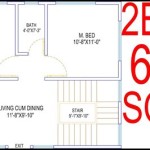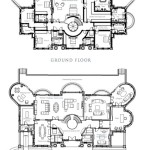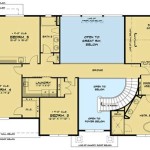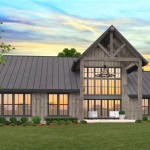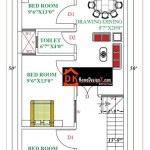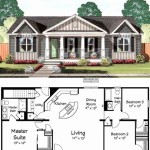A 2 bedroom tiny house floor plan is a detailed blueprint that guides the construction and layout of a compact house featuring two bedrooms. It encompasses the arrangement and dimensions of rooms, doors, windows, and other functional elements within the house.
These floor plans are designed for individuals or families seeking efficient and affordable housing options. For instance, a young couple desiring their own space or someone downsizing their lifestyle might find these plans suitable. The compact size of these houses makes them ideal for urban dwellers, those with limited land space, or those prioritizing sustainability.
In this article, we will delve into the key aspects of 2 bedroom tiny house floor plans, exploring their advantages, design principles, and various layout configurations.
Key Considerations for 2 Bedroom Tiny House Floor Plans:
- Maximize space efficiently
- Incorporate natural light
- Utilize vertical space
- Create separate sleeping areas
- Provide adequate storage
- Consider multi-functional spaces
- Design for comfort and livability
- Implement sustainable features
- Comply with building codes
These factors play a crucial role in crafting functional and comfortable 2 bedroom tiny house floor plans.
Maximize space efficiently
Optimizing space utilization is paramount in 2 bedroom tiny house floor plans. Every square foot needs to serve a purpose and contribute to the overall functionality of the house. Here are some strategies for maximizing space efficiency:
- Utilize vertical space: By incorporating lofts, built-in shelves, and vertical storage solutions, you can make the most of the vertical space available. This is especially useful for creating separate sleeping areas or storage spaces without sacrificing floor space.
- Multi-functional furniture: Opt for furniture that serves multiple purposes. For example, a sofa that converts into a bed, a dining table that can be used as a desk, or ottomans that provide both seating and storage.
- Open floor plans: By minimizing walls and partitions, you can create a more spacious and open feel. This allows for flexible furniture arrangements and better flow of natural light.
- Smart storage solutions: Built-in storage options, such as under-bed drawers, wall-mounted shelves, and hidden compartments, can help keep clutter at bay and maximize usable space.
By implementing these space-saving techniques, you can design a 2 bedroom tiny house that feels comfortable, livable, and surprisingly spacious.
Incorporate natural light
Harnessing natural light is crucial for creating a comfortable and inviting living space in a 2 bedroom tiny house. Natural light not only illuminates the interior but also reduces the need for artificial lighting, saving energy and enhancing the overall ambiance of the house.
- Large windows and skylights: By incorporating ample windows and skylights, you can flood the interior with natural light. Place windows strategically to capture sunlight throughout the day and consider installing skylights in areas that receive less natural light.
For example, a large window in the living room can provide ample daylight, while a skylight above the kitchen island can brighten up the cooking space.
- Strategic window placement: Pay attention to the orientation of your house and the placement of windows. South-facing windows allow for maximum sunlight exposure, while windows on multiple sides provide cross-ventilation and natural light from different angles.
For instance, a bedroom with windows on both the east and west walls can enjoy both morning and evening sunlight.
- Light-colored interiors: Opt for light-colored walls, ceilings, and flooring to reflect and amplify natural light. Dark colors tend to absorb light, making the space feel smaller and dimmer.
For example, painting the walls a light shade of white or beige can help bounce light around the room, creating a brighter and more spacious feel.
- Avoid obstructions: Keep windows and skylights free from obstructions such as furniture, tall plants, or curtains that block natural light. Position furniture strategically to allow for maximum light penetration.
For example, placing a couch in front of a large window can block the flow of light into the room. Instead, consider placing the couch perpendicular to the window to allow light to enter from the side.
By incorporating these natural light strategies into your 2 bedroom tiny house floor plan, you can create a bright, airy, and welcoming living space that feels larger and more connected to the outdoors.
Utilize vertical space
Making the most of vertical space is essential in 2 bedroom tiny house floor plans. By utilizing vertical space effectively, you can create the illusion of more space and accommodate all the necessary functions within a compact footprint.
- Lofts: Lofts are a great way to add an extra sleeping area or create a dedicated space for work or hobbies. They can be accessed via a ladder or stairs and often overlook the main living area, providing a sense of separation and privacy.
For example, a loft above the living room can be used as a guest bedroom or a cozy reading nook.
- Built-in shelves: Built-in shelves are a versatile and space-saving way to store books, display dcor, or keeporganized. They can be incorporated into walls, under stairs, or even in the bathroom to maximize storage without taking up valuable floor space.
For example, a built-in bookcase in the living room can provide ample storage for books and display items, while shelves under the stairs can be used to store shoes and other frequently used items.
- Vertical storage solutions: Utilize vertical space for storage by installing vertical drawers, pull-out shelves, and hanging organizers. These solutions can be used in closets, pantries, and even under beds to maximize storage capacity without cluttering up the floor.
For example, a vertical drawer unit in the bedroom can provide additional storage for clothes or linens, while a pull-out shelf in the kitchen can be used to store spices or other frequently used cooking items.
- Wall-mounted furniture: Wall-mounted furniture, such as floating shelves, desks, and TV stands, can help free up floor space and create a more spacious feel. These pieces are mounted directly to the wall, eliminating the need for bulky legs or supports.
For example, a wall-mounted desk in the bedroom can provide a dedicated workspace without taking up valuable floor space, while floating shelves in the living room can display books and dcor without cluttering up the floor.
By incorporating these vertical space-saving techniques into your 2 bedroom tiny house floor plan, you can create a functional and livable space that maximizes every inch of available space.
Create separate sleeping areas
In a 2 bedroom tiny house, creating separate sleeping areas is crucial for privacy and comfort. Here are some strategies to consider:
- Utilize a loft: Lofts are an excellent way to create a separate sleeping area without sacrificing valuable floor space. Accessed via a ladder or stairs, lofts can provide a cozy and private retreat for sleep or relaxation.
For example, a loft above the living room can be used as a master bedroom, while a smaller loft above the kitchen can serve as a guest room or a dedicated workspace.
- Incorporate a Murphy bed: Murphy beds are wall-mounted beds that can be folded up into a cabinet when not in use. This space-saving solution is ideal for creating a separate sleeping area in a multi-functional room.
For example, a Murphy bed in the living room can be folded up during the day to create a more spacious living area, and then lowered down at night to create a private sleeping space.
- Use curtains or screens: Curtains or screens can be used to create temporary partitions and separate sleeping areas within a larger room. This is a flexible and cost-effective solution that allows for easy reconfiguration of the space.
For example, a curtain can be hung from the ceiling to divide a living room into a sleeping area and a workspace, and then drawn back during the day to create a more open and spacious feel.
- Consider a sleeping alcove: A sleeping alcove is a recessed area within a room that isdesigned for sleep. It can be partially or fully enclosed with walls or curtains to create a more private and intimate sleeping space.
For example, a sleeping alcove in the corner of the living room can be created by framing a small area with walls and installing a curtain for privacy.
By incorporating these strategies into your 2 bedroom tiny house floor plan, you can create separate and comfortable sleeping areas that meet your privacy and comfort needs while maximizing the available space efficiently.
Provide adequate storage
Adequate storage is essential in 2 bedroom tiny houses to maintain a clutter-free and organized living space. Here are some strategies to consider:
- Maximize vertical space: Utilize vertical space for storage by installing floor-to-ceiling cabinets, shelves, and drawers. Vertical storage solutions make efficient use of the available height and can accommodate a significant amount of items without taking up valuable floor space.
For example, floor-to-ceiling cabinets in the kitchen can provide ample storage for cookware, pantry items, and other kitchen essentials, while tall bookshelves in the living room can accommodate books, dcor, and other belongings.
- Incorporate built-in storage: Built-in storage solutions, such as drawers under beds, benches with storage compartments, and window seats with built-in shelves, can provide additional storage without sacrificing floor space or compromising the aesthetics of the house.
For example, drawers under the bed can be used to store seasonal clothing, blankets, or other bulky items, while a window seat with built-in shelves can provide a cozy spot to relax and store books or magazines.
- Utilize multi-purpose furniture: Opt for furniture pieces that serve multiple functions and provide hidden storage. Ottomans with built-in storage compartments, coffee tables with drawers, and beds with lift-up storage can help maximize storage capacity while maintaining a tidy and organized space.
For example, an ottoman with built-in storage can provide extra seating and a place to store blankets, pillows, or toys, while a coffee table with drawers can be used to store books, remotes, or other living room essentials.
- Create designated storage areas: Designate specific areas in the house for different types of storage. For example, allocate a closet for clothing and linens, a pantry for food and non-perishables, and a mudroom for shoes, coats, and outdoor gear. This helps keep belongings organized and easily accessible.
For example, a designated pantry with shelves and drawers can provide ample storage for canned goods, dry foods, and cooking supplies, while a mudroom with hooks and cubbies can help keep shoes, coats, and bags organized and out of the way.
By incorporating these storage strategies into your 2 bedroom tiny house floor plan, you can ensure that your home has ample storage space to keep your belongings organized and your living space clutter-free and comfortable.
Consider multi-functional spaces
In 2 bedroom tiny house floor plans, maximizing space utilization is crucial. One effective way to achieve this is by incorporating multi-functional spaces that serve multiple purposes.
Multi-functional spaces allow you to optimize the use of every square foot in your tiny house. By designing spaces that can transform or adapt to different functions, you can create a flexible and versatile living environment that meets your changing needs.
Here are some examples of multi-functional spaces that can be incorporated into 2 bedroom tiny house floor plans:
- Living room/guest room: A convertible sofa bed in the living room can double as a guest bed when needed, providing a comfortable sleeping space for visitors without the need for a dedicated guest room.
- Kitchen/dining area: A kitchen island or peninsula can serve as both a food preparation area and a dining table, eliminating the need for a separate dining room and saving valuable space.
- Bedroom/office: A loft or alcove in the bedroom can be designed to accommodate a desk and chair, creating a dedicated workspace without sacrificing bedroom space.
- Mudroom/laundry room: A mudroom can be combined with a laundry room to create a functional space for storing shoes, coats, and other outdoor gear, while also housing the washer and dryer.
By incorporating multi-functional spaces into your 2 bedroom tiny house floor plan, you can maximize space utilization, create a flexible and adaptable living environment, and enjoy a comfortable and functional home despite its compact size.
Design for comfort and livability
In 2 bedroom tiny house floor plans, designing for comfort and livability is paramount. Every aspect of the design should contribute to creating a cozy, functional, and enjoyable living space. Here are some key considerations to keep in mind:
Maximize natural light: Natural light not only illuminates the interior but also reduces the need for artificial lighting, saving energy and enhancing the overall ambiance of the house. Incorporate ample windows and skylights to flood the interior with natural light. Place windows strategically to capture sunlight throughout the day and consider installing skylights in areas that receive less natural light.
Create a comfortable living space: The living room should be a welcoming and comfortable space where you can relax, entertain guests, or simply unwind. Choose comfortable seating, such as a couch and armchairs, and arrange them to create a cozy and inviting atmosphere. Consider incorporating a fireplace or wood stove to add warmth and ambiance.
Design a functional kitchen: The kitchen should be designed to maximize efficiency and functionality. Utilize vertical space with floor-to-ceiling cabinets and shelves to maximize storage capacity. Consider a galley-style kitchen layout to optimize the use of space and create a seamless workflow. Incorporate energy-efficient appliances and fixtures to minimize utility costs.
Create cozy and private bedrooms: The bedrooms should be designed to provide a restful and relaxing retreat. Choose comfortable beds and mattresses, and provide adequate storage space for clothing and personal belongings. Consider incorporating blackout curtains or blinds to ensure privacy and block out light when needed.
Implement sustainable features
Incorporating sustainable features into 2 bedroom tiny house floor plans is crucial for creating environmentally friendly and energy-efficient homes. By implementing sustainable practices, you can minimize your environmental impact, reduce utility costs, and contribute to a more sustainable future. Here are some key sustainable features to consider:
Energy-efficient appliances and fixtures: Opt for Energy Star-rated appliances and fixtures, which meet strict energy efficiency standards. These appliances consume less energy, reducing your energy bills and carbon footprint. Consider installing LED lighting throughout the house, as LED bulbs are highly energy-efficient and last longer than traditional incandescent bulbs.
Renewable energy sources: Explore renewable energy sources to power your tiny house. Solar panels can be installed on the roof to generate electricity from sunlight, while a solar water heater can provide hot water using solar energy. These renewable energy systems can significantly reduce your reliance on fossil fuels and decrease your energy costs.
Sustainable building materials: Choose sustainable building materials that have a low environmental impact. Recycled materials, such as reclaimed wood or recycled steel, can reduce waste and conserve natural resources. Consider using natural and renewable materials like bamboo or cork for flooring or countertops, as these materials are durable and eco-friendly.
Water conservation measures: Implement water conservation measures to reduce water consumption. Install low-flow faucets and showerheads, which can significantly reduce water usage. Collect rainwater in a rainwater harvesting system to use for irrigation or other non-potable purposes. By conserving water, you can minimize your water bills and contribute to water conservation efforts.
Comply with building codes
Ensuring compliance with building codes is crucial when designing 2 bedroom tiny house floor plans. Building codes are regulations established to ensure the safety, structural integrity, and habitability of buildings. Adhering to these codes is essential for obtaining building permits and ensuring the safety and well-being of occupants.
- Structural integrity: Building codes specify minimum requirements for the structural elements of a house, such as the foundation, framing, and roof. These requirements are designed to ensure the stability and durability of the structure and protect occupants from potential hazards like earthquakes or high winds.
- Fire safety: Building codes include provisions for fire safety, including the use of fire-resistant materials, the installation of smoke detectors and fire extinguishers, and the provision of adequate escape routes. Compliance with these codes helps minimize the risk of and protects occupants in the event of a fire.
- Electrical and plumbing systems: Building codes regulate the installation and safety of electrical and plumbing systems. These codes ensure that electrical wiring is properly sized and protected, and that plumbing systems are designed to prevent leaks and contamination. Compliance with these codes helps ensure the safe and efficient operation of these essential systems.
- Energy efficiency: Many building codes now include provisions for energy efficiency. These codes may require the use of energy-efficient appliances, insulation, and windows to reduce energy consumption and minimize the environmental impact of the house. Compliance with these codes can lead to lower energy bills and a more sustainable living environment.
By complying with building codes, you can ensure that your 2 bedroom tiny house floor plan meets the minimum safety and habitability standards, protects the health and well-being of occupants, and complies with local regulations. Failure to comply with building codes can result in costly delays, fines, or even the inability to obtain building permits.










Related Posts

